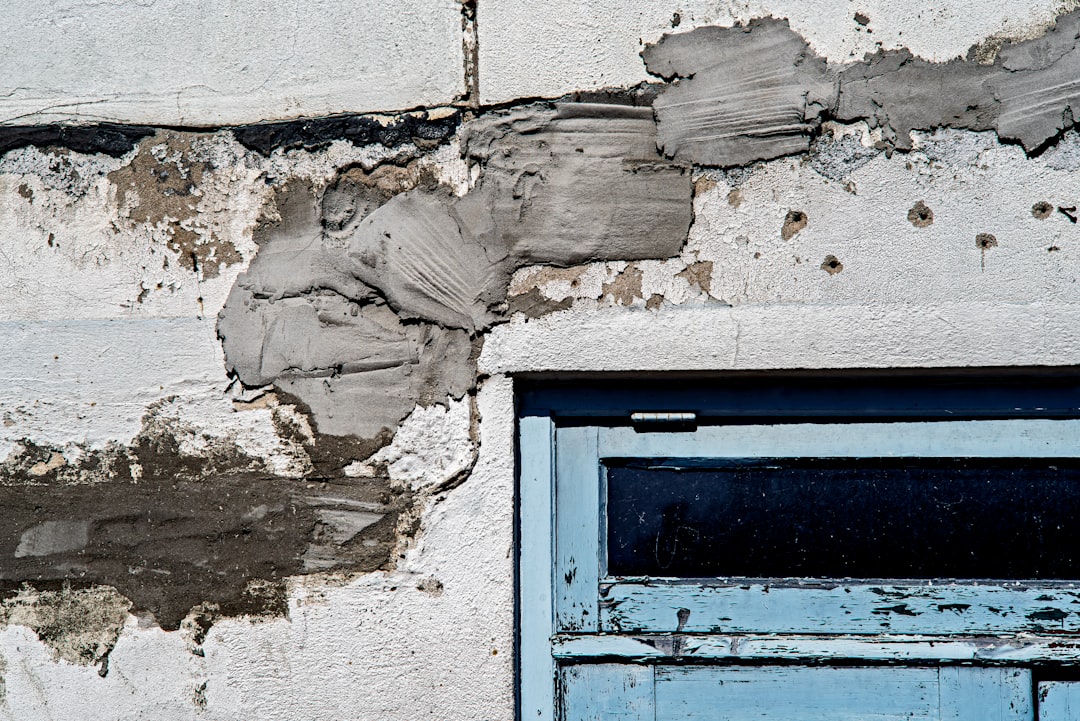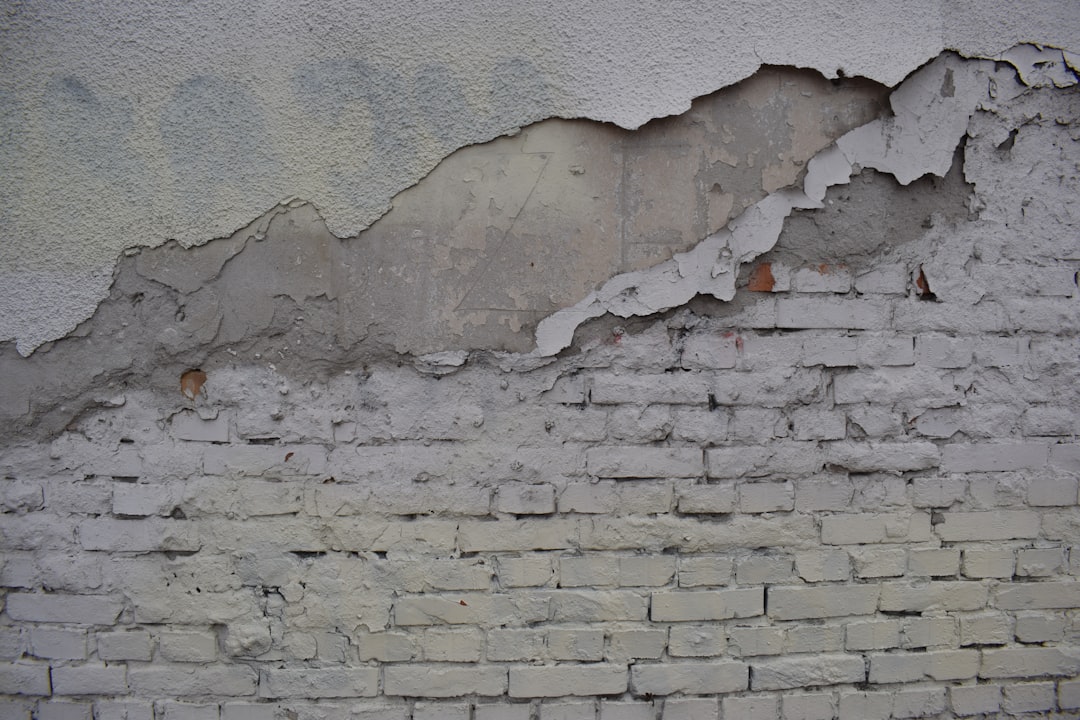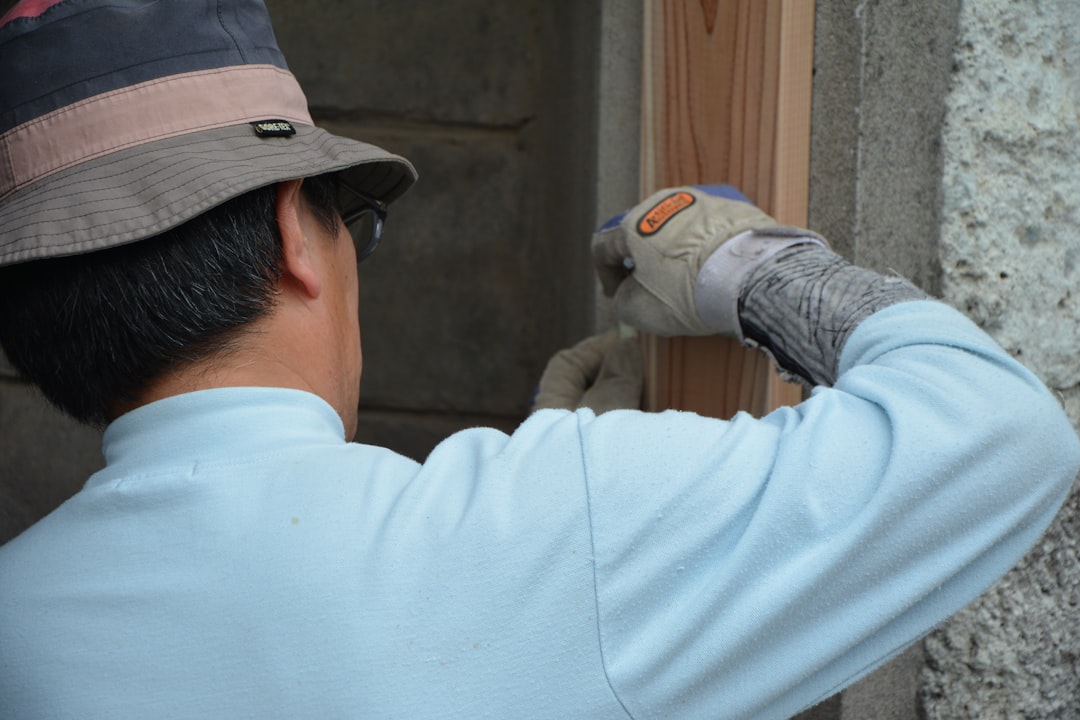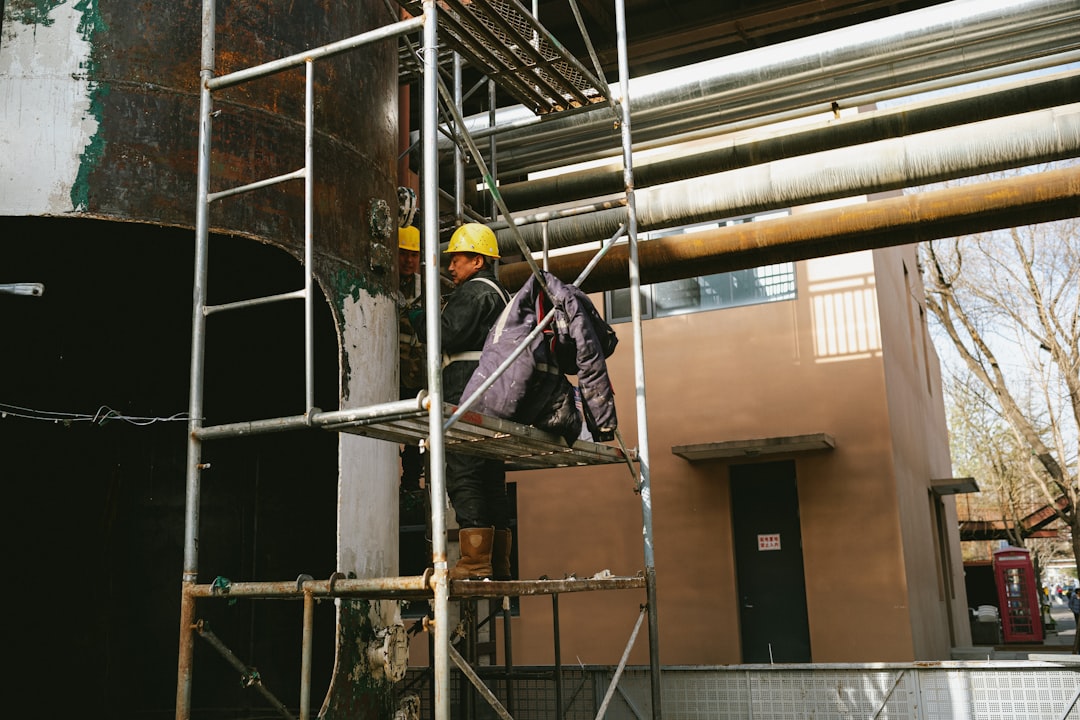

Engage prospects with a scan and streamline customer engagement with FREE QR code marketing tools by Sona – no strings attached!
Create a Free QR CodeFree consultation

No commitment

Engage prospects with a scan and streamline customer engagement with FREE QR code marketing tools by Sona – no strings attached!
Create a Free QR CodeFree consultation

No commitment
In today’s digitally driven world, QR codes have evolved from a novelty to a strategic powerhouse for QR code marketing by bridging offline engagement with online action. For stucco repair services, that bridge matters: homeowners frequently discover contractors through yard signs, door hangers, neighborhood chatter, or a chance encounter with a job site, yet they rarely remember phone numbers or URLs later. A quick scan converts that fleeting interest into immediate action: booking an inspection, uploading photos of damage, or accessing repair guides without any app downloads or complex setup.
Used well, QR codes streamline how stucco contractors capture demand, educate customers, and move inquiries into the pipeline with minimal friction. They make every printed asset a measurable entry point to your digital ecosystem, while giving operations teams the data needed to prioritize high-intent leads and follow up quickly. The result is better customer access, faster response times, and a tighter connection between marketing, sales, and field services.
QR codes are versatile too. From static links on durable signage to dynamic codes on rotating offers, they adapt to your market cycles, pricing updates, and service territories. With modern platforms like Sona QR, you can manage codes centrally, track engagement, and connect scan data to CRM records for a clear view of what drives revenue in stucco repair.

The challenge for many stucco repair companies is that analog processes like paper forms and static brochures often prevent teams from following up on genuine interest. A homeowner may pick up a flyer or visit a job site but never fill out a form, remaining anonymous and unpursued. Field crews may hand out business cards that get lost, and invoices may sit in an email inbox without prompting next steps. These gaps slow response and allow intent to cool.
QR codes help address this by seamlessly connecting offline discovery with immediate digital engagement. Scans can prompt actions that are faster than a phone call and clearer than a generic homepage visit: upload damage photos, request an estimate window, or chat with support via text messages about hairline cracks versus structural issues. Here is how to adopt QR-driven workflows that give every interested homeowner a direct, low-barrier path to connect:
By embedding QR codes within everyday repair workflows, contractors open up digital access for both basic and urgent customer needs. When curiosity strikes, a scan gives the prospect a clear path forward, ensuring no high-value opportunity goes unnoticed or unaddressed. Start creating QR codes for free.

A recurring frustration in stucco repair is the invisible traffic: potential customers who encounter your brand through printed materials, vehicles, job site signage, or neighbor recommendations, then never progress to a formal inquiry. They often intend to follow up, yet phone numbers and URLs get lost, and the moment passes. This lack of visibility means leads slip away without ever making it into your CRM.
QR codes give contractors real-time insight into who is engaging outside the traditional funnel and create immediate routes to action. They do not just point to a website; they connect to the right page for the job, as covered in QR codes in marketing. Think of a homeowner scanning a QR on your estimate sheet to upload additional photos, or a neighbor scanning your yard sign to see a one-minute video on how your team repairs bulging stucco. Benefits include:
A practical example: placing QR codes on damage estimate forms allows customers to upload photos directly from their device, expediting assessments and insurance claims. It shortens the time to quote, decreases follow-up calls, and ensures that a busy homeowner’s interest is captured before it fades.

Another challenge facing stucco repair companies is campaign inconsistency. Disconnected, hard-to-measure tactics leave prospects confused and hamper your ability to nurture relationships. Without clear routes from print to digital, you struggle to understand which touchpoints worked and which did not.
Modern QR formats solve this by enabling integrated, consistent customer experiences with measurable next steps, with home repair QR examples showing how service teams streamline intake. Choosing the right format helps you control what happens after the scan and how you track it. Common formats include:
Dynamic codes allow the destination to change as service offerings evolve. Update your content without reprinting thousands of mailers, and redirect scans to a new landing page if your campaign shifts mid-season. This reduces confusion, aligns messaging, and creates a clear path for customers to progress through their decision-making process no matter where their journey starts.

Many stucco repair businesses miss high-value accounts when physical interactions are not tracked or attributed to later sales outcomes. Growth opportunities often appear in overlooked spaces where interest is high but the next step is unclear. By mapping your typical offline touchpoints, you can convert each into a measurable digital entry point.
Start with your highest-visibility assets, then work outward. Prioritize placements that neighbors and passersby see, plus touchpoints that occur at critical decision moments like estimates and invoices. Examples include:
By combining strategic QR placements with scan tracking and CRM integration, contractors can learn which physical marketing investments deliver actual opportunities rather than unmeasured impressions. This evidence lets you reallocate budget from low-performing print to assets that reliably generate appointments and revenue.

Challenges like high demo interest going unconverted are common in the industry. Prospects may browse your services, watch videos, and then stall before contacting your team. QR codes give them an immediate path to a right-sized next step, so attention turns into action.
Tie each use case to a common customer interaction and the outcome it supports. Keep the destinations laser focused, with the minimum number of taps needed to complete the task. Examples:
Such use cases turn fleeting interest and partial conversions into concrete business outcomes. They also reduce staff workload on repetitive tasks, while supporting customer education and building trust through transparent, helpful content.
One frequent pain point for stucco repair teams is the inability to differentiate between lukewarm interest and high purchase intent. Without this clarity, it is hard to tailor follow-up or prioritize sales resources. QR code campaigns solve this by creating natural segments based on what was scanned, where, and when.
Each scan is a behavior signal, a form of intent data. By deploying different QR codes across touchpoints, you can segment automatically and then sync those audiences to your CRM and ad platforms. Here is how to structure it for stucco:
With Sona QR, each code becomes a smart entry point that captures data for retargeting based on real behavior, not assumptions. Over time, these segments drive more relevant messaging, higher click-through rates, and a better return on media and sales effort.
Disconnected campaigns fragment the stucco repair customer experience, causing inconsistent messaging and wasted spend. Integrating QR codes across channels ensures that every offline asset becomes actionable and measurable, while maintaining consistent calls to action from first touch to follow-up.
Think of QR codes as connectors. They not only transport the scanner to the right destination, they also bring data back to your analytics and CRM. Here is how they enhance a broader strategy in stucco repair:
QR codes serve as the offline onramp to your digital marketing engine and unlock a new layer of data collection across once-unmeasurable channels. With a centralized platform like Sona QR, you can manage all codes, monitor performance, and sync scan data with your CRM and ad platforms for continuous optimization.
High-performing QR programs do not happen by accident. They are planned around clear outcomes, designed for the physical environment, and instrumented to measure real business results. A structured checklist helps you launch efficiently, reduce rework, and prove value quickly.
Use the following steps to define goals, choose the right code type, optimize the scan experience, and iterate based on performance. Share the plan with field teams so everyone understands where codes will appear, what they do, and how to explain their benefits to homeowners.
Define the business problem you want to solve. For stucco repair, common goals include generating more estimate requests from yard signs, speeding insurance claim submission, or educating homeowners with DIY tips to build trust before a sale. Be specific about where drop-offs occur today, such as door hangers that rarely result in calls or estimates that do not lead to scheduled work.
Choose between static and dynamic codes based on your need for editability, analytics, and retargeting. Static codes work for evergreen destinations like company profiles or permanent guides. Dynamic codes are ideal for campaigns that evolve, require tracking, or need A/B testing of content and calls to action.
Good design makes scans more likely. Codes should be large enough, contrasted well, and framed with a clear benefit-driven message. Test across popular phone models, lighting conditions, and viewing distances similar to the real environment where the code will live.
Roll out codes in the order of highest impact based on foot traffic, vehicle visibility, and current campaigns. Coordinate with field crews and office staff to ensure all materials are placed and that the follow-up process is ready.
Measurement is what turns QR codes from a novelty into a performance channel. Connect scan data to downstream outcomes, then optimize based on real results. Use the data to justify spend and to fine-tune creative and placement choices.
Stucco repair services risk losing potential revenue if the path from offline engagement to closed deal is not monitored end-to-end. Many teams notice a lift in inquiries but cannot trace them back to specific yard signs, mailers, or community placements. That makes it difficult to double down on what works, reduce waste, or time outreach for maximum effect.
Robust QR tracking closes this loop by capturing the who, where, and when of scans and then tying those events to outcomes inside your CRM, and supports offline attribution. You learn not only what was scanned but also which scans resulted in estimates, inspections, and booked repairs. With that visibility, marketing and operations can make fast, confident adjustments. Key capabilities include:
With the right analytics, stucco repair contractors gain a clear, actionable feedback loop. Every scan becomes a data point you can use to improve marketing efficiency, sales responsiveness, and overall revenue yield from offline channels.
QR codes deliver the best results when they are easy to scan, clearly explained, and connected to automated follow-up. The goal is to make every scan instantly useful for the homeowner and instantly informative for your team. Focus on tips that fit the physical media you use most and the workflows you want to streamline.
Below are practical, high-impact tactics tailored to stucco repair:
Each of these tips addresses frequent gaps in the lead handoff process. When combined, they ensure every indication of interest gets a timely, relevant follow-up that moves the customer closer to booking.
QR codes are more than a shortcut; implemented thoughtfully, they become a strategy for converting offline curiosity into online action and measurable business results. For stucco repair services, this means turning yard signs, invoices, and mailers into instant gateways for quotes, documentation, and scheduling. It also means gaining data that eliminates guesswork and guides smarter investment in local marketing.
When embedded across the customer journey, QR codes ensure consistent, context-aware experiences and reliable analytics for marketing and operations teams. They help contractors capture demand at the source and then nurture it through to booked repairs, warranty activations, and positive reviews. Here is what they deliver:
With platforms like Sona QR and Sona, stucco repair companies can launch codes quickly, manage them centrally, and attribute outcomes to specific offline assets. Start with one or two high-impact placements, measure results, and expand systematically. Start creating QR codes for free.
QR codes have revolutionized stucco repair services by transforming traditional customer interactions into seamless, data-driven opportunities. From simplifying access to repair information and maintenance guides to enabling instant appointment scheduling, QR codes enhance customer acquisition and elevate the overall service experience. Imagine your clients effortlessly scanning a code to view personalized repair estimates or instructional videos—boosting trust and satisfaction while streamlining your workflow.
With Sona QR, you gain the power to create dynamic, trackable QR codes that can be updated instantly without reprinting, allowing you to adapt campaigns and offers on the fly. Every scan provides actionable insights that connect offline touchpoints directly to revenue, helping you optimize marketing efforts and grow your stucco repair business efficiently. Start for free with Sona QR today and transform every customer interaction into a measurable step toward success.
QR codes connect offline interactions like yard signs and flyers to immediate digital actions such as booking inspections or uploading damage photos, making it easier for homeowners to engage and for contractors to capture leads.
Common use cases include DIY repair guides, insurance claim submissions, contactless scheduling, and providing instant access to repair cost estimates or maintenance information.
By using dynamic QR codes linked to analytics platforms, you can monitor scan frequency, location, device type, conversion rates, and connect data to your CRM to measure leads and revenue from specific offline assets.
Place QR codes on high-visibility assets such as yard signs at job sites, estimates and invoices, direct mail campaigns, vehicle wraps, and community bulletin boards to capture interest at critical decision points.
Static QR codes are suited for permanent locations like yard signs or vehicle wraps, while dynamic QR codes are ideal for campaigns requiring updates, tracking, and retargeting, such as direct mailers and invoices.
Ensure QR codes are large enough, have good contrast, include a clear call to action like 'Scan for Free Estimate,' and test them across devices and lighting conditions to guarantee easy scanning.
Each scan provides intent data that can segment audiences by their interest level and needs, enabling automated personalized follow-ups and retargeting through CRM and ad platforms.
Integrating QR codes across print, social media, direct mail, and events creates consistent messaging, measurable touchpoints, and seamless transitions from offline interest to online action.
They provide homeowners with quick, low-friction ways to take next steps like scheduling or uploading damage photos, preventing interest from fading due to lost contact info or complicated processes.
Define clear goals, select appropriate QR code types, design and test codes, deploy them strategically across channels, educate your team, then track and optimize performance using data.
Use Sona QR's trackable codes to improve customer acquisition and engagement today.
Create Your FREE Trackable QR Code in SecondsJoin results-focused teams combining Sona Platform automation with advanced Google Ads strategies to scale lead generation

Connect your existing CRM

Free Account Enrichment

No setup fees
No commitment required

Free consultation

Get a custom Google Ads roadmap for your business






Launch campaigns that generate qualified leads in 30 days or less.
